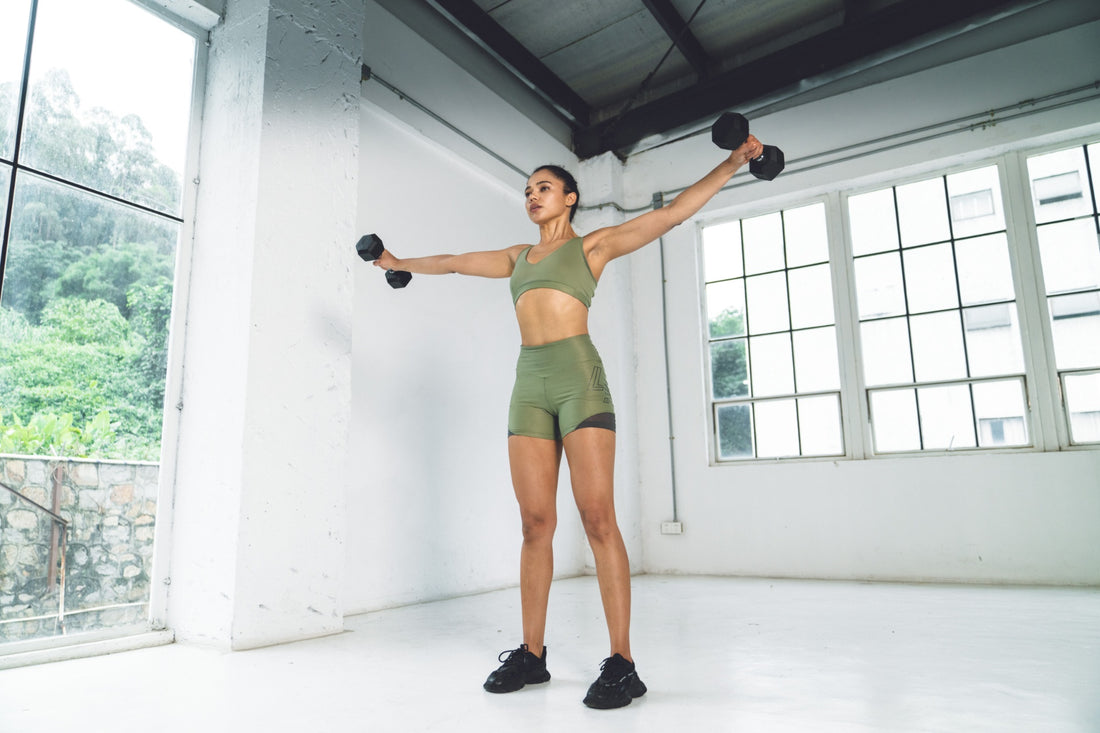
When it comes to sculpting a V-shaped torso or enhancing shoulder strength and stability, incorporating effective shoulder exercises into your fitness routine is non-negotiable. Among the myriad options, the lateral raise and shoulder press stand out as pivotal movements for shoulder development. However, fitness enthusiasts and beginners alike often find themselves at a crossroads, deliberating over lateral raise vs shoulder press: which exercise is superior for achieving their fitness goals? This intriguing debate necessitates a closer examination of these two exercises, their benefits, and how they complement a powerful strength training program.
The shoulder press, often termed the overhead press, is a compound movement that engages multiple muscle groups across the upper body, including the anterior, medial, and posterior deltoids, triceps, and upper chest. Traditionally executed with dumbbells or a barbell, the shoulder press primarily focuses on increasing overall shoulder strength and mass. Its compound nature allows for heavier weights to be lifted, facilitating significant improvements in upper body power and functionality. This exercise is not only beneficial for those looking to enhance their physical aesthetics but also for individuals aiming to increase their performance in sports and daily activities that require overhead strength.
In contrast, the lateral raise is an isolation exercise, specifically targeting the medial deltoid. Performed with dumbbells, kettlebells, or cables, lateral raises primarily aim to improve shoulder width and definition. Unlike the shoulder press, lateral raises typically require lighter weights, focusing on muscle hypertrophy rather than sheer power. This exercise is ideal for those looking to sculpt their shoulders, adding that desirable weight to create a broader, more pronounced silhouette.
From a functional perspective, both exercises offer distinct benefits. The shoulder press's compound movement pattern can enhance coordination and stability throughout the upper body by engaging the core and upper back muscles, which are crucial for maintaining proper posture under load. On the other hand, lateral raises, with their emphasis on the medial deltoid, contribute to a more balanced shoulder development, potentially reducing the risk of injuries by strengthening the smaller muscle groups and improving muscular symmetry.

The debate over lateral raise vs shoulder press cannot be settled with a one-size-fits-all answer, as the choice largely depends on an individual's specific fitness goals. For those prioritizing strength and functional power, the shoulder press should be a cornerstone of your training regimen. Meanwhile, if your goal is to enhance aesthetic appeal by achieving well-defined shoulders, incorporating lateral raises into your routine will be more beneficial.
However, for optimal shoulder development and performance, integrating both lateral raises and shoulder presses into your workout routine offers the best of both worlds. By targeting the shoulders from different angles and utilizing both compound and isolation movements, you create a comprehensive training strategy that promotes balanced muscle growth, strength, and endurance. Additionally, alternating between these exercises can help prevent training plateaus and keep your workouts varied and engaging.
If you want to create a V-shaped torso or increase shoulder strength and stability, you can use Major Fitness's adjustable dumbbells for lateral raises to help shape your shoulders and improve overall shoulder strength and muscle development. Learn more.
To maximize the benefits of each exercise, it's crucial to focus on proper form and technique. For the shoulder press, ensure that your core is engaged and your back is straight to mitigate the risk of injury. Similarly, when performing lateral raises, maintain a slight bend in the elbows and avoid swinging the weights to ensure that the medial deltoids are effectively targeted. Gradually increasing the weight as your strength improves will also contribute to continuous progress.
The ultimate choice between lateral raise vs shoulder press doesn't necessarily hinge on determining a clear winner, but rather on understanding how each can contribute to a well-rounded physical development. Whether your aspirations lie in building functional strength, enhancing your physique, or both, recognizing the unique benefits of each exercise will allow you to tailor your training program to your personal goals and preferences. By doing so, you'll not only optimize your shoulder workouts but also pave the way for greater overall fitness achievements.
Embarking on your fitness journey with a balanced approach to shoulder training will ensure you achieve the comprehensive development you desire. Mixing both lateral raises and shoulder presses will offer benefits that transcend a singular focus, contributing to both the functional prowess and aesthetic appeal of your upper body. Embrace the synergy between these exercises for a stronger, well-defined, and more capable physique that aligns with your fitness ambitions.



















